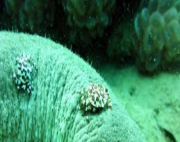Antioxidant and Anti-Hypercholesterolemia Activities of Bohadschia vitiensis Extract In vitro and In vivo
Main Article Content
Abstract
Cardiovascular diseases remain a leading cause of mortality worldwide, with oxidative stress and high cholesterol levels as key contributing factors. Natural marine-derived compounds are increasingly explored as alternative therapeutic agents.This study aimed to analyse the antioxidant activity and anti-hypercholesterolemia potential of brown sea cucumber (Bohadschia vitiensis) extract in vitro and in vivo. The ABTS (2, 2-azinobis-3-ethylbenzothiazoline-6-sulfonic acid) method was used as the antioxidant test model, while the Liebermann-Burchard method was applied for in vitro anti-hypercholesterolemia testing. Antioxidant activity was assessed by measuring the free radical scavenging capability of the brown sea cucumber extract, which demonstrated an IC₅₀ value of 27.69 ppm, indicating very strong antioxidant activity compared to ascorbic acid (IC₅₀ of 16 ppm). The in vitro anti-hypercholesterolemia test revealed that the extract could reduce cholesterol levels by up to 65.566% at a concentration of 500 ppm, with an EC₅₀ value of 369.42 ppm. The saponins content in brown sea cucumber plays a role in cholesterol binding, contributing to its cholesterol-lowering effects. Additionally, statistical analysis using ANOVA and Duncan's post-hoc test showed that cholesterol levels in test animals (mice) after administration of the extract were significantly lower than in the control group (p < 0.01). This study highlights the potential of brown sea cucumber (B. vitiensis) extract, sourced from Indonesian marine ecosystems, as a natural antioxidant with significant anti-hypercholesterolemic effects both in vitro and in vivo.
Downloads
Article Details
Section

This work is licensed under a Creative Commons Attribution-NonCommercial-NoDerivatives 4.0 International License.
How to Cite
References
1. Wibowo S, Yunizal, Setiabudi E, Erlina MD, Tazwir. Technology of Handling and Processing of Sea Cucumbers (Holothuroidea). Jakarta: IPPL, Slipi; 1997.
2. Bordbar S, Farooq A, Nazamid S. High-value components and bioactives from sea cucumbers for functional foods—A review. Mar Drugs. 2011; 9:1761–1805.
3. Avigail Y, Yudiati E, Pringgenies D. Antioxidant activity and total phenolic content of sea cucumbers in Karimunjawa waters, Jepara. J Mar Res. 2019; 8(4):346–54.
4. Ayuwardani N, Sofro ZM, Fakhrudin N, Ikawati Z. Antioxidant and neuroprotective activities of Phyllanthus emblica L.: A review. Trop J Nat Prod Res. 2024; 8(10):8617–26. https://doi.org/10.26538/tjnpr/v8i10.2.
5. Kurnia D, Meilinawati D, Marliani L, Febrina E, Asnawi A. A review of tannin compounds in avocado as antioxidants. Trop J Nat Prod Res. 2024; 8(10):8607–16. https://doi.org/10.26538/tjnpr/v8i10.1.
6. Mahmudah RA, Mu'nisa A, Ngitung R. Identification of bioactive compounds in black sea cucumber (Holothuria edulis) extract. Proc Semin Biol. 2019. ISBN 978-602-52965-3-6.
7. Husain F, Yunus FAM, Basri IF. Antioxidant activity and total phenolic content of sea cucumber (Holothuroidea) extract. Med Sains J Ilm Kefarmasian. 2023; 8(2):695–704.
8. Maharisti RA, Waznah U, Slamet S, Rahmasari KS. In vitro anticholesterol assay of methanol, n-hexane, and ethanol extract fractions of butterfly pea (Clitoria ternatea L.) leaves. Proc Univ Res Colloq. 2023; 745–55.
9. Tangkau MI, Fatimawali F, Suoth EU. Antioxidant activity of ethanol extract from white galangal (Alpinia galanga) stem using ABTS method. Pharmacon. 2023; 12(3):358–66.
10. Setiawan F, Yunita O, Kurniawan A. Antioxidant activity of ethanol extract from sappan wood (Caesalpinia sappan) using DPPH, ABTS, and FRAP methods. Media Pharm Indones. 2018; 2(2):82–9.
11. Membri DK, Yudistira A, Abdullah SS. Antioxidant activity of ethanol extract from Liosina paradoxa sponge collected from Mantehage Island. Pharmacon. 2021; 10(2):774–9.
12. Vifta R, Rahayu RT, Luhurningtyas FP. Antioxidant activity of combined extracts of Medinilla speciosa fruit and red ginger (Zingiber officinale) rhizome using ABTS method. Indones J Chem Sci. 2019; 8(3):197–201.
13. Inayah I. Total flavonoid content and antioxidant activity of gayam seed leaves (Inocarpus fagiferus (Park.) Forst.) Extract using different solvents [Doctoral dissertation]. Universitas Islam Negeri Maulana Malik Ibrahim; 2019.
14. Molyneux P. The use of the stable free radical diphenylpicrylhydrazyl (DPPH) for estimating antioxidant activity. Songklanakarin J Sci Technol. 2004; 26(2):211–9.
15. Verdiana M, Widarta IWR, Permana IDGM. Effect of solvent type on ultrasonic-assisted extraction of antioxidant activity from lemon peel (Citrus limon (Linn.) Burm F.) Extract. J Ilmu Teknol Pangan. 2018; 7(4):213–22.
16. Sari FN, Sari Y. Antioxidant activity of Indonesian indigenous fruit peel waste. J Anal Farmasi. 2023; 8(1):1–3.
17. Yolanda A. Antioxidant activity and total phenolic content in sea cucumber extract [Doctoral dissertation]. Faculty of Fisheries and
Marine Sciences; 2019.
18. Fitriansyah SN, Fidrianny I, Ruslan K. Correlation of total phenolic, flavonoid, and carotenoid content of Sesbania sesban (L. Merr) leaves extract with DPPH scavenging activities. Int J Pharmacogn Phytochem Res. 2017; 9(1):89–94.
19. Aatab F, Bellali F, Aboudamia FZ, Errhif A, Kharroubi M. Phenolic compounds and in vitro antioxidant activity of spray-dried and freeze-dried aqueous extracts of sea cucumber (Holothuria tubulosa). J Appl Biol Biotechnol. 2023. https://doi.org/10.7324/JABB.
20. Lindawati NY, Ningsih DW. Anticholesterol activity of ethanol extract from green kiwi (Actinidia deliciosa) fruit. J Ilm Manuntung. 2020; 6(2):183–91.
21. Wulandari N, Krisanti M, Elfidasari D. Diversity of sea cucumbers from Pramuka Island, Seribu Islands, Jakarta Bay. Life Sci. 2020; 1(2).
22. Vasil’ev RF, Veprintsev TL, Dolmatova LS, Naumova VF, Trofimov AV, Tsaplev YB. Kinetics of ethylbenzene oxy-chemiluminescence in the
presence of antioxidants from tissues of the marine invertebrate Eupentacta fraudatrix: Estimating the concentration and reactivity of the natural antioxidants. Kinet Catal. 2014; 55(2):148–53.




